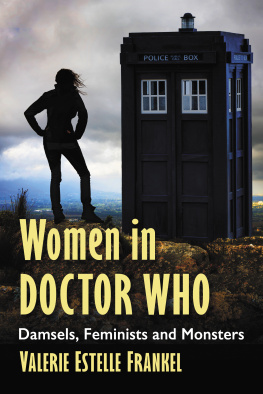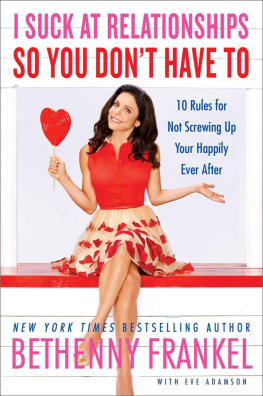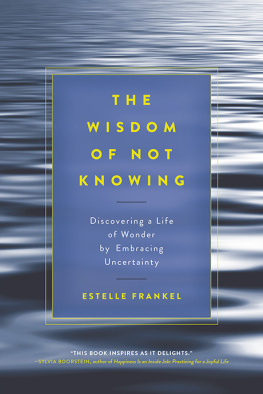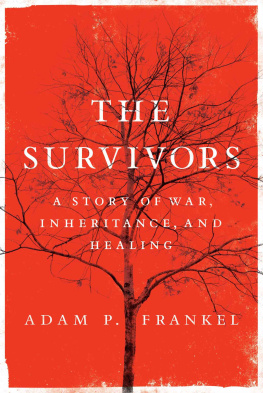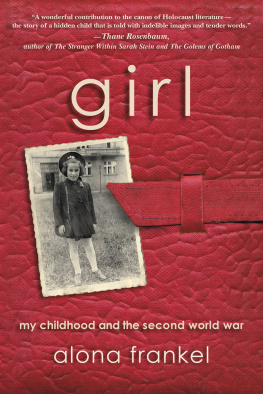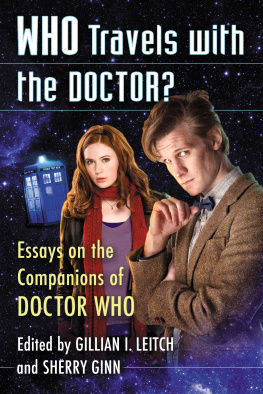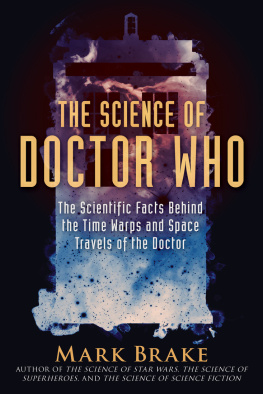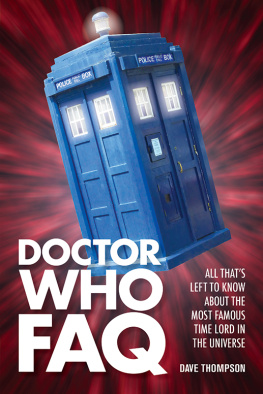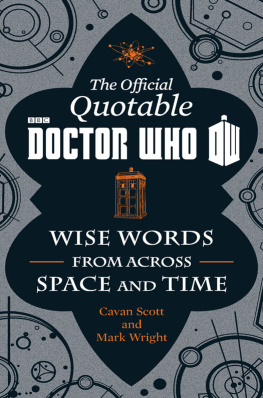
Also by OR EDITED BY VALERIE ESTELLE FRANKEL AND FROM MCFARLAND
The Women of Orphan Black: Faces of the Feminist Spectrum (2018)
Superheroines and the Epic Journey: Mythic Themes in Comics, Film and Television (2017)
Outlanders Sassenachs: Essays on Gender, Race, Orientation and the Other in the Novels and Television Series (edited, 2016)
Adoring Outlander: Essays on Fandom, Genre and the Female Audience (edited, 2016)
The Symbolism and Sources of Outlander: The Scottish Fairies, Folklore, Ballads, Magic and Meanings That Inspired the Series (2015)
The Comics of Joss Whedon: Critical Essays (edited, 2015)
Women in Game of Thrones: Power, Conformity and Resistance (2014)
Teaching with Harry Potter: Essays on Classroom Wizardry from Elementary School to College (edited, 2013)
Buffy and the Heroines Journey: Vampire Slayer as Feminine Chosen One (2012)
From Girl to Goddess: The Heroines Journey through Myth and Legend (2010)
Women in Doctor Who
Damsels, Feminists and Monsters
VALERIE ESTELLE FRANKEL

McFarland & Company, Inc., Publishers
Jefferson, North Carolina
LIBRARY OF CONGRESS CATALOGUING DATA ARE AVAILABLE
BRITISH LIBRARY CATALOGUING DATA ARE AVAILABLE
e-ISBN: 978-1-4766-3154-7
2018 Valerie Estelle Frankel. All rights reserved
No part of this book may be reproduced or transmitted in any form or by any means, electronic or mechanical, including photocopying or recording, or by any information storage and retrieval system, without permission in writing from the publisher.
Front cover images 2018 iStock
McFarland & Company, Inc., Publishers
Box 611, Jefferson, North Carolina 28640
www.mcfarlandpub.com
Acknowledgments
A big thanks to Kathrin Franke, Yochanan Urias and Risa Romano for their editing and to Chrissie at chakoteya.net for all her background work. And, of course, to the creators, producers, and actors who filled Doctor Who with such fascinating women.
Introduction
Back in 1963, the producers of Doctor Who envisioned their new television show as a way to enlighten children about various historical time periods as the characters explored space and time (Muir 9). Despite the modest aim, the show ran for 26 years. For most of the series, the male Doctor was the hero on the hero-quest; his mostly female companions were sidekicks.
Producer Graham Williams comments, The function of the companion Im sad to say, is and always has been, a stereotype the companion is a storytelling device it is a very cardboard figure (Tulloch and Alvarado 209). For the First through Third Doctors, men leap into action and women (or rather, submissive twenty-year-old girls) wear short skirts and scream for rescue. The Fourth Doctors era tried to move away from this stereotypethe beloved Brigadier was more well-rounded, and writers created female companions with different personalities. However, each personality appeared a one-note archetype. Williams noted that after scientist, ditz, feminist, and jungle girl, the only stereotype he could think of was Romana the ice queen (Tulloch and Alvarado 213). These characters were strong, clever, independent, and funny, but lacked much depth (though Sarah Jane triumphed when her actress rewrote the lines). Next, Five got Nyssa the young science genius and brash, argumentative Tegannew characters in a female team-up, but ones who cleaved heavily to their roles. (Male Turlough the traitor and Adric the teen genius were admittedly no better.) Six reverted to screaming damsels Peri and Mel, this time with extra sex appeal. The women they (rarely) encountered tended to be just as one-note: soldiers, queens, monsters, wisewomen, and collaborators. Many had positions of power, but few used them wisely or well.
A change finally came when Seven paired with Ace, a teen explosives expert who finally got depth, family, and backstoryabout half her episodes dealt with her fears and memories. Sadly, this was the era of the shows cancelation in 1989. In the continuing novels and audio adventures and in New Who (2005 to present), the female characters are much more developed, but still derive from one-line conceptsEgyptian princess, futuristic archeologist, charming shopgirl. Their personalities are brackets, not goals or conflicts. Thus the show fits well into archetypal studies, considering how each group rather than individual character is presented. Theres much to discover in terms of agency and feminism, but also how much characters manage to transcend their tired roles.
Of course, women besides companions appear through the showthe Rani and the Inquisitor, soldiers and princesses, scientists and leaders. Tackling every woman in the Whoniverse (admittedly likely missing a few) was quite a chore. Needing to draw the line somewhere, I included minor characters from the show of fifty-plus years, but for the spinoff shows, audio adventures, books, and comics, I only included major companions. In fact, theres an extraordinary amount of extended universe: shows include The Sarah Jane Adventures, Torchwood, K9, and the current Class, along with a few solitary pilots and specials. (These modern shows are identified by series, while Classic Who is analyzed with its 26 seasons, matching British terminology of the two time periods. Serials appear in italics, with single episodes in quotes.) The books continued as New Adventures (199197, Virgin Books) and Missing Adventures (199497, Virgin Books), Eighth Doctor Adventures (19972005, BBC Books), and novellas (200104, Telos Publishing), along with audio plays (1998, Big Finish Productions), comic strips in Doctor Who Magazine, and original comic books and graphic novels. These were a place for minority companions and more experimental plotlines, where many female creators like series editor Rebecca Levene, authors Kate Orman and Claire Lister, and audio scriptwriters Caroline Symcox, Barbara Clegg, Jenny T. Colgan, Catherine Harvey, Una McCormack, Jacqueline Rayner, Emma Beeby, and Alison Lawson found a chance to shine.
Verity Lambert, who launched the show, became the great heroine of the Whoniverse. Verity Lambert was Doctor Whos first producer, who helped develop the basic concept of the show. Doctor Who was a show that could literally do anything and go anywhere, because it would (Riggo). She left after two years, but the program bore her stamp, especially in the capable companion Barbara. As a producer, Lamberts Bechdel test (whether women speak to each other onscreen about something other than men) has the most successof nineteen stories, 85 percent pass (Simon).
Many women helped shape the show, like original Cybermen designer Alexandra Tynan. Also notable is Delia Derbyshire, the pioneer of electronic music and sampling, who created the first arrangement of the Doctor Who theme in 1963. Further, nearly fifty years later, while Russell T. Davies is credited with reviving the show, a salute goes to producer Julie Gardner and also Jane Tranter, Controller of Drama Commissioning at the BBC, who battled fiercely for it.
Individual writers and directors have also shone through the show. Julia Smith was the second woman to direct Doctor Who (specifically The Smugglers and The Underwater Menace
Next page
